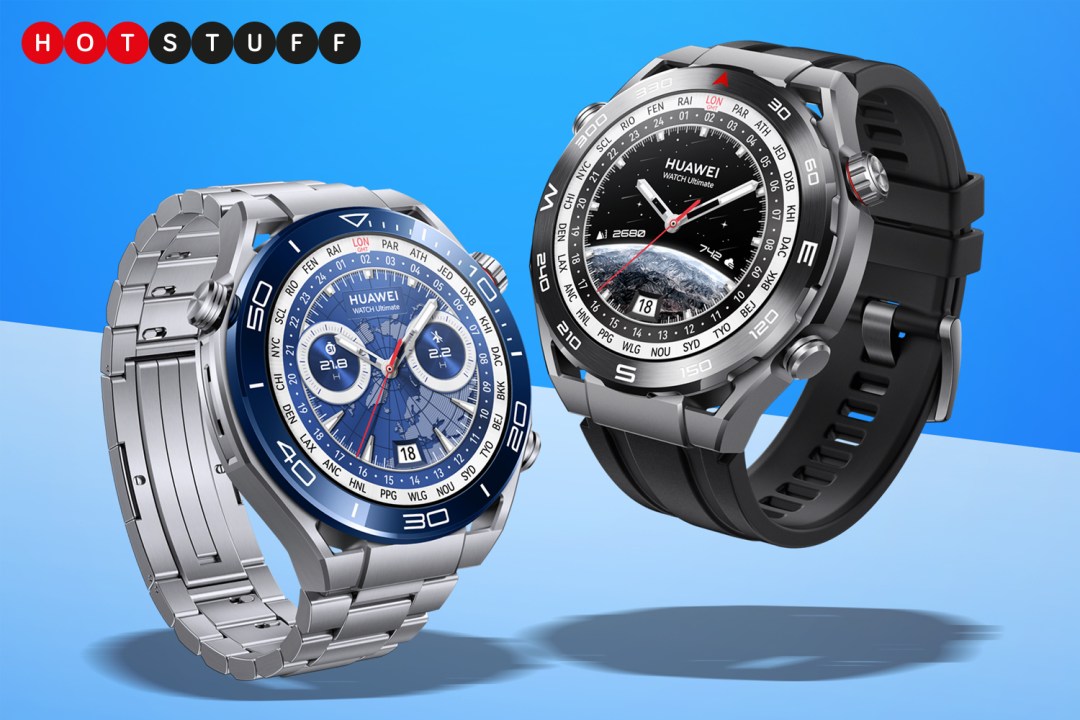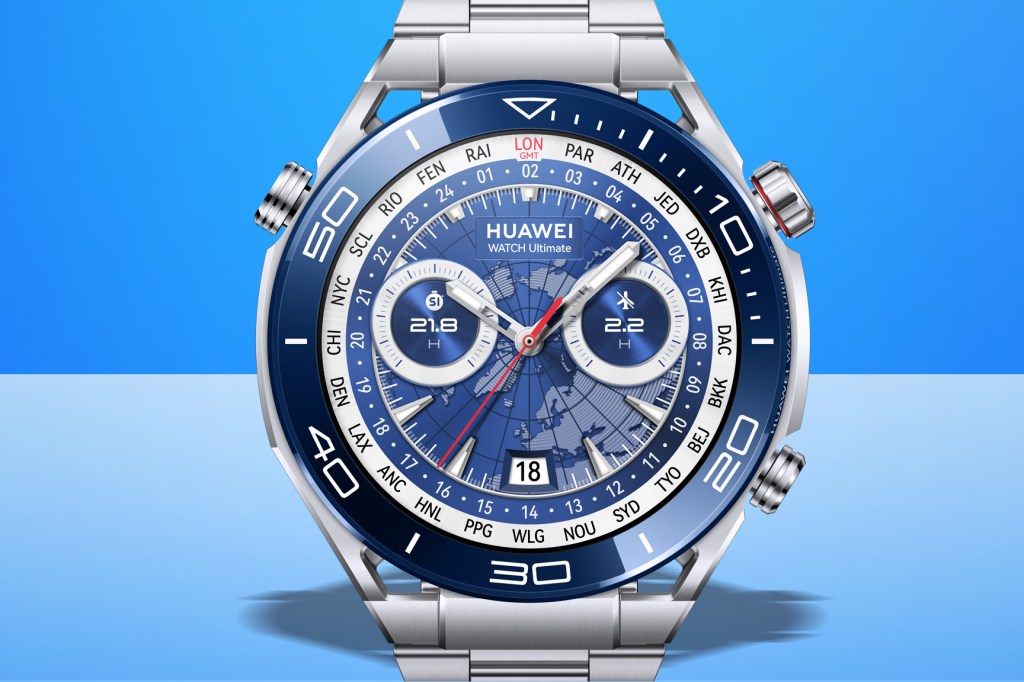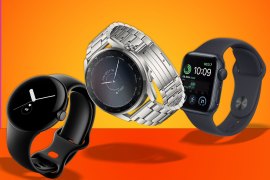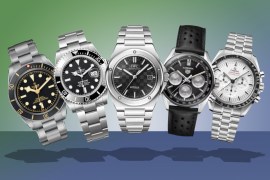Huawei Watch Ultimate majors on diving and design
Luxury wearable jumps in at the deep end

Huawei’s latest smartwatch doesn’t know the meaning of the word “compromise”. Instead of targeting tech companies, the Huawei Watch Ultimate wants to go toe-to-toe with luxury traditional timepieces, courtesy of some world-first materials, an imposing design and impressive ocean diving abilities.
In a first for any smartwatch, the Watch Ultimate’s casing is made from zirconium-based liquid metal – something normally found on traditional luxury watches. It’s 4.5x tougher than the titanium alloy used in Huawei’s own Watch GT 3 Pro, and has no intergranular corrosion. That’s basically science talk for “shrugs off seawater, even at a microscopic level”. The bezel, meanwhile, uses nano-tech ceramic, polished with 33 different processes for an ultra-tough finish.
The 1.5in, 466×466 resolution AMOLED is the biggest circular screen found on any smartwatch, and uses LTPO tech to drop the refresh rate in order to cut down on power consumption. It’ll manage an impressive 1000 nits peak brightness, so should be clear to see even under the midday sun of a Saharan desert, and the 2.35mm of sapphire glass protecting it is thicker than any rival wearable.
It’s launching in two varieties: Expedition Black, which comes bundled with a natural rubber strap, and Voyage Blue, which has a titanium band. Both versions also include an extra long HNBR rubber strap, which is 30% lighter than the fluoroelastomer usually used by smartwatch makers, and is designed to fit comfortably over a diving suit.

Watersports really are the focus here, made possible by 10ATM, ISO 22810 and EN 13319 certifications for water resistance. That means it’s good to take down to 100m under the ocean’s surface, versus 40m for the Apple Watch Ultra. You can record each dive from start to finish, with a choice of recreational and technical dive modes. The former records water type, maximum oxygen partial pressure, your safety stop time, gradient factor and timer alerts, while the latter adds last stay depth. A bespoke watchface puts your current depth, decompression limit and ascent rate on constant display.
A third crown button on the left side of the watch goes straight into the new Expedition mode, while the two on the right perform the same functions as Huawei’s other watches: namely cycling through menus, powering the watch on and off, and activating workout features.
It’s as comprehensive as mainstream smartwatches get on dry land, too. Expedition mode uses five-constellation, dual-band GPS positioning for near-worldwide coverage, and the ability to set custom markers for finding your way back out of the wilderness. A dark light mode also swaps the display’s usual colour scheme for an orange on black UI, to make it easier on your eyes at night.
Over 100 different sports and activities are supported, with real-time guidance and science-based fitness programs for running and cycling. It’ll auto-adjust pace if you’re training for a marathon, while also providing 24-hour continuous heart rate and ECG monitoring, arterial stiffness analysis, and around-the-clock SpO2 tracking. Third-party apps like Strava are supported through the Huawei Health app, which can also record stress and monitor sleep using the company’s latest TruSleep 3.0 sensor.
A 530mAh battery should be sufficient for two whole weeks of typical use, according to Huawei, or eight days of ‘heavy’ use. Unless you’re running back-to-back ultramarathons, it sounds like longevity shouldn’t be an issue. The firm also reckons it has the fastest wireless charging of any wearable, needing just 60 minutes for a full charge using the bundled charging cradle.
Unlike the most recent string of Huawei wearables, which debuted in China first and only came to other countries months later, the Huawei Watch Ultimate is going global from day one. It goes on sale on the 3rd of April, with a wider rollout expected to follow later in 2023.
There’s currently no word on pricing, but given the materials used, we’re betting customers should expect something close to the £849 asked by Apple for an Apple Watch Ultra.



